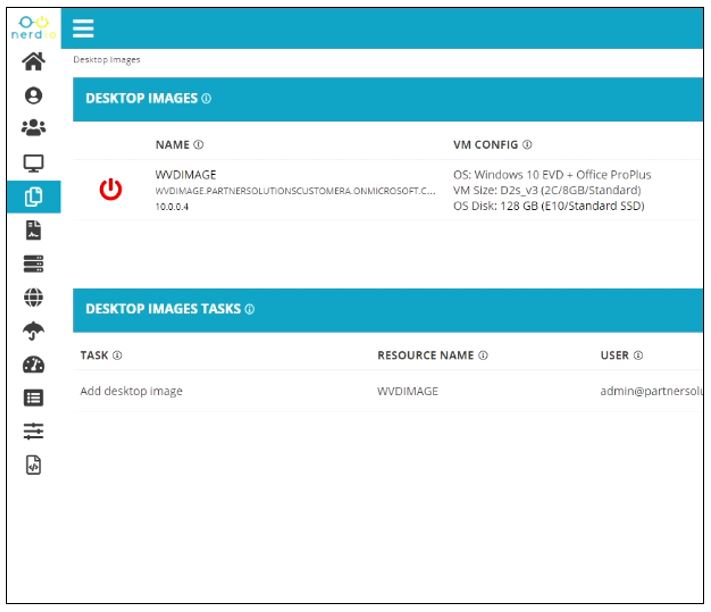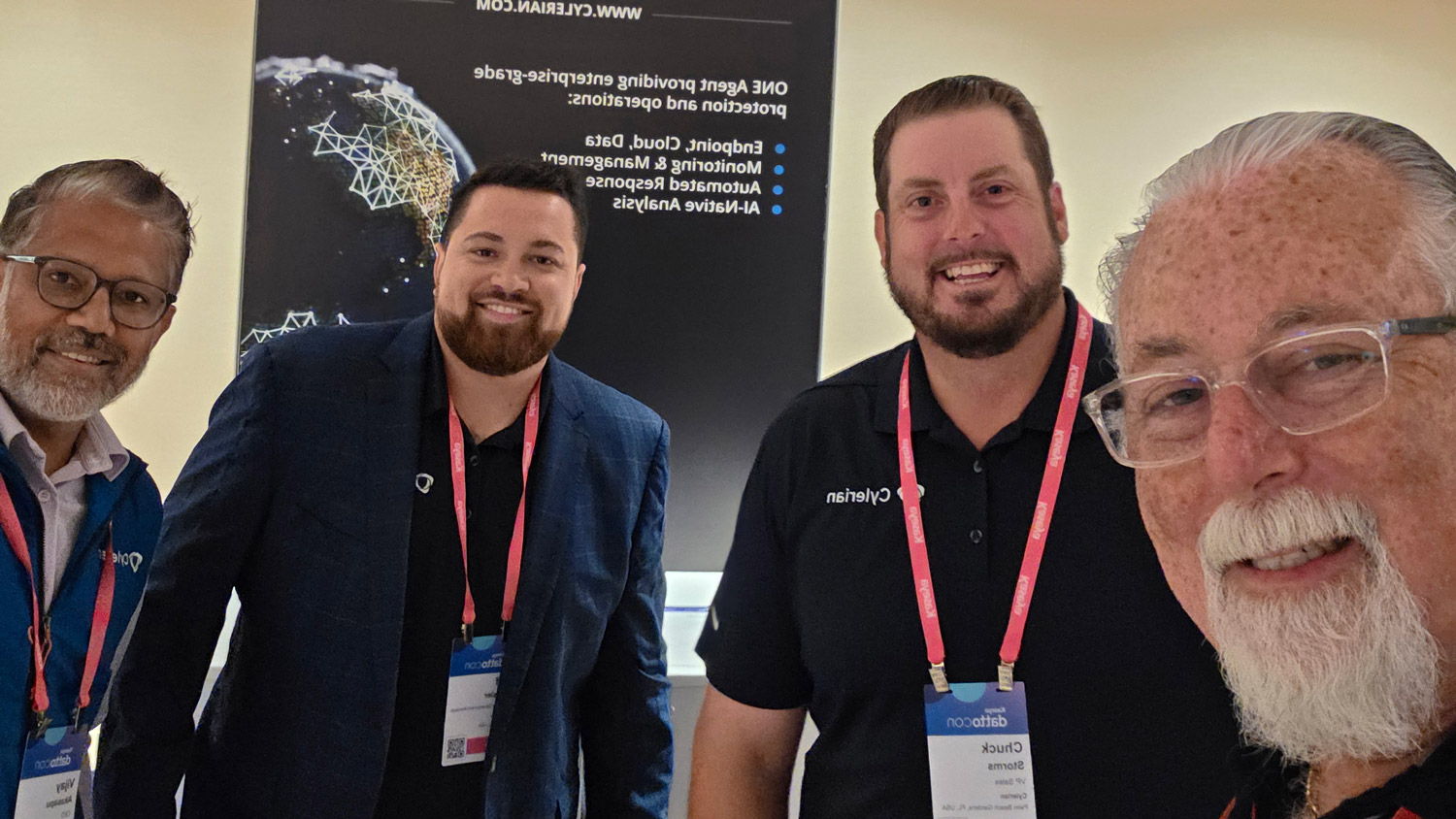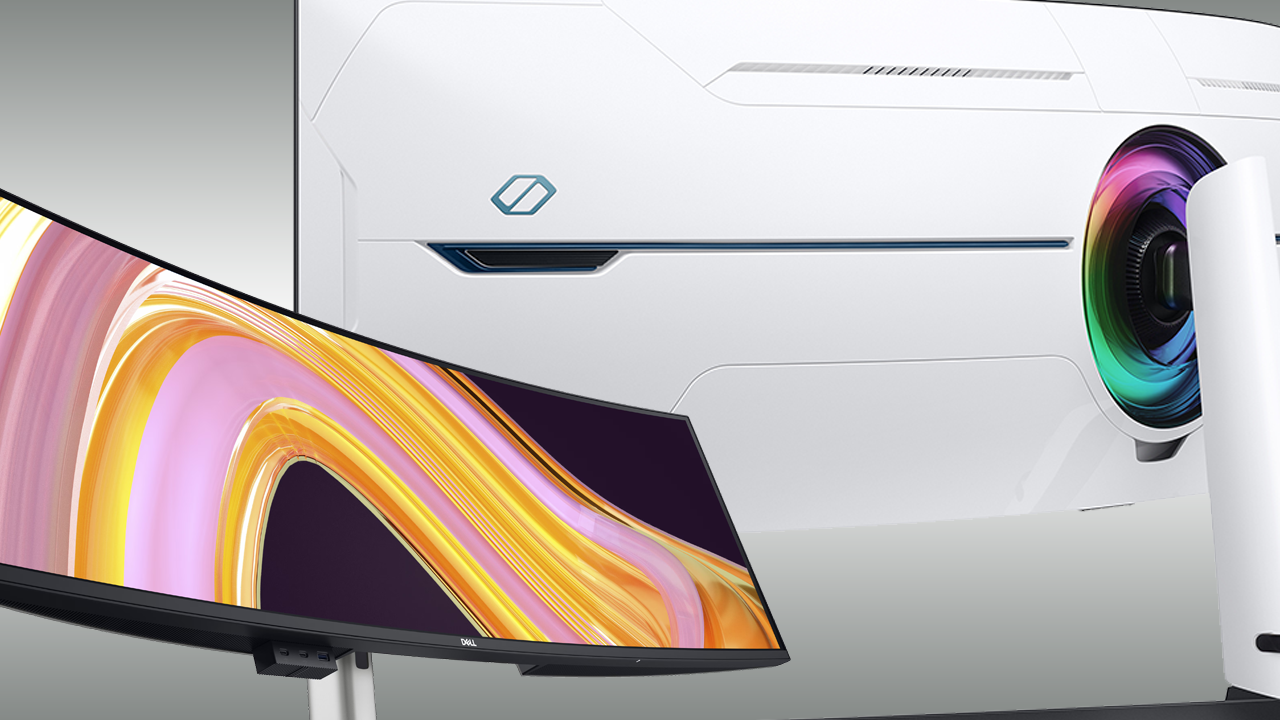Nerdio has released a multitenant management and optimization platform for Windows Virtual Desktop (WVD) and other solutions based on Microsoft Azure.
The company announced the news on the second and closing day of NerdioCon, its first annual partner conference.
Unlike the previously available Nerdio for Azure, which is tailored to the needs of MSPs brand new to Microsoft’s public cloud, Nerdio Manager for MSP is designed to help channel pros with an existing Azure footprint more easily monitor and manage those assets.
“Within 10 minutes, you can just plug it in and start using that product with the existing environment,” said Nerdio CEO Vadim Vladimirskiy in a keynote address this morning.
The new tool also helps users deploy “greenfield” Azure infrastructures faster, he added. “It can take somewhere between two to four hours to stand up an entire environment. With Nerdio Manager for MSP, it takes less than an hour.”
In addition to WVD, the new system offers functionality for managing virtual machines, backups, and Azure Active Directory implementations, including users and groups, for multiple clients through a single console.
Users can also employ a wizard-driven cost estimator to get automated recommendations on designing and optimizing Azure environments, and view detailed per user per month spending estimates. The system then helps MSPs adjust those environments dynamically over time in response to fluctuating needs and saving opportunities.
“If you deploy WVD using all the native tools available for Microsoft today, you’re going to be running it 24 x 7, so 70, 75 percent of the time it’s going to be unutilized,” Vladimirskiy says. “You need technology like Nerdio Manager for MSP to actually figure out when those times are and how to turn it on and off and scale it in and out based on the user demand.”
According to Nerdio, auto-scaling technology in the new product can cut Azure compute and storage costs by up to 75%.
At present, Nerdio Manager for MSP doesn’t integrate with third-party PSA and RMM solutions. Links to such products are planned for the future, however, and users or vendors who wish to jumpstart that process themselves can utilize the product’s REST API today.
Nerdio currently charges subscribers to Nerdio Manager for MSP the same $12 per user per month starting rate that users of Nerdio for Azure pay. “There will be some volume tiers that we’re going to be introducing in the MSP product that are going to be a bit more aggressive than in [Nerdio for Azure],” Vladimirskiy says.
Among many features on the Nerdio Manager for MSP roadmap is one that will let users define a single desktop image and then deploy it on all of their WVD hosts.
“They’ll be able to update Windows on one machine and then push those changes out potentially to their entire customer base,” Vladimirskiy says.
Nerdio plans to continue selling, maintaining, and updating Nerdio for Azure, which includes features like support for Microsoft Remote Desktop Services not needed or included in Nerdio Manager for MSP. “We do expect that most new deployments are going to be leveraging the new product because of how easy and quick it is to get up and running,” Vladimirskiy says.
Unlike Nerdio for Azure, moreover, Nerdio Manager for MSP is not hosted on Nerdio’s own Azure resources. “This is an Azure application that’s installed from the Azure Marketplace into a partner’s own Azure subscription,” Vladimirskiy explains. “It runs completely independently of every other MSP, so each MSP has sort of their own version that they fully control, and they decide where it installs, and where it resides, and who has access to the data.” That’s an appealing feature, he adds, for MSPs with security or regulatory compliance concerns.
Nerdio Manager for MSP is heavily based on Nerdio Manager for WVD, which reached market last March. That product was designed for large businesses with in-house IT departments looking for a management tool they could easily deploy on top of an existing Azure infrastructure. The new system takes that same functionality and adds features managed service providers need, such as multitenancy and white labelling.
According to Vladimirskiy, Nerdio Manager for WVD currently has over 1,000 users. “If you’d asked me a year ago when we were planning our launch of the Nerdio Manager for WVD product where I expected to be in a year from now, I don’t think we would have predicted anything of this magnitude,” he says. COVID-19 and the stay-at-home orders it inspired are a big reason for that momentum.
“There is no choice for a lot of companies to give their employees the ability to get to applications and be able to be productive remotely, so WVD has gained a tremendous amount of traction certainly in the enterprise and to a large extent in SMB,” Vladimirskiy says. “A lot of MSPs are focusing on it much more than they were certainly a year and a half ago and even a year ago.” Partially as a result, he continues, Nerdio has more than 1,000 MSP partners at present.
Microsoft has seen adoption of WVD accelerate in the past year as well.
“Every [desktop as a service] solution we’ve had before Windows Virtual Desktop has either come up short in the experience for the user or has been a big financial burden for the customer. Windows Virtual Desktop is neither. It’s a great experience at a great cost, and it drives a ton of Azure revenue,” said Gavriella Schuster, corporate vice president of Microsoft’s One Commercial Partner organization, in a NerdioCon appearance yesterday. “It went from zero to 60 overnight.”
The work-from-home explosion continues to drive rapid growth in Microsoft’s cloud business generally. Commercial revenue for Office 365 grew 21% in the company’s second fiscal quarter, according to fiscal results announced yesterday. Azure revenue was up 50% in the quarter.
“This pandemic has helped a lot of businesses really rethink what business are they in, and how do they want to run their company, and what does that look like in the future?” Schuster said yesterday. “It’s really turned them on to technology.”
Per comments shared with ChannelPro late last year, Schuster sees room for further growth in the cloud despite all of the purchasing activity in the last year, noting that Microsoft believes no more than 5% of businesses globally have moved to the cloud so far.
“If you’re thinking like, well, maybe I missed the wave, no way,” Schuster said yesterday. “The wave is still going strong and you’re just at the beginning.”
In addition to Schuster, speakers at NerdioCon included Tyler Bryson, corporate vice president for Microsoft’s U.S. Partner Ecosystem, Brent Combest, general manager of the One Commercial Partner organization, and Claire Gribbin, global director of Microsoft’s SMB customer segment. Microsoft’s willingness to share so much executive time with Nerdio dovetails with a prediction recently made by Vladimirskiy that Microsoft will invest more heavily in MSPs this year.
“I think Microsoft is finally coming around to realize that the way you unlock the SMB market is not by calling up Al’s Bike Shop down the street and telling them how great Azure is. It’s by working with the service providers and making it easier for them, more cost-effective, more profitable, [and] less risky to adopt Azure. I think that mindset is finally taking hold,” Vladimirskiy says.













